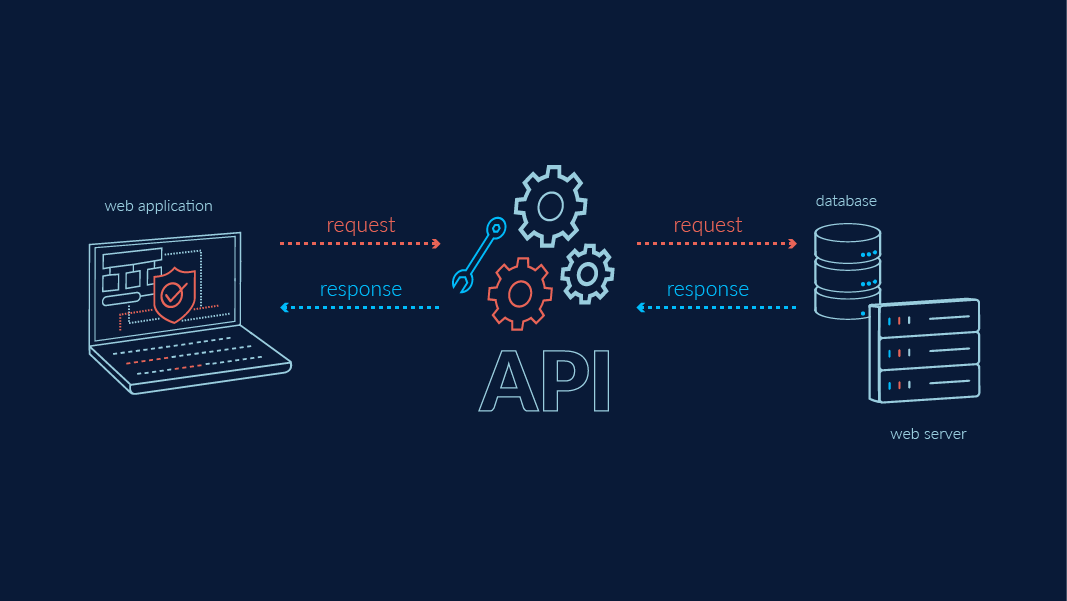The solution to this challenge is to empower mobile operators with capabilities that will enable their teams to drive technological innovations in a more agile and flexible manner.
Among these capabilities, innovating on top of Public and Partner APIs are fast becoming operators’ go-to strategy towards limitless innovation in the field of mobile network management.
Let’s take a look at what APIs, in particular Public and Partner APIs, mean and what they have to offer.
What Is: an API?
An API, or Application Programming Interface, is a computing interface that enables two software to interact and transmit data to each other. APIs ease the engineering burden by creating reusable components of the source software. In a simpler analogy, an API is just like a waiter at a restaurant. As the customer seats themselves and selects their preferred meal, the waiter records the order and proceeds to transmit this information to the chef. Once the meal has been prepared by the chef, the waiter collects it and serves it back to the customer. As such, the waiter serves as an intermediary between the customer and the chef, transporting the full meals – in the case of APIs, the data – between them. In this same way, an application submits a request to procure information by calling the API of a second application, which in turn responds with this information through the API.

- Public APIs (a.k.a Open APIs) are open to any consumer outside of the organization in respect to allowed usage rights.
- Private APIs are accessible only for internal usage and designed for easy maintenance and leveraged reusability purpose.
- Partner APIs are proprietary functionalities provided by vendors to their partners for development of their customized solutions with licensed accessibility.
In terms of architecture, Public APIs, also known as Open APIs, do not actually differ from their regular counterparts. In terms of accessibility though, Open APIs are made publicly available and are designed to integrate into an application’s backend functionality without altering their proprietary source code. In scope of functionality, API owner decides which functionality to be publicly available and is responsible for its interface designs, security, scalability and so on.
On the other hand, Private APIs are contained within specific organizations and are controlled by application developers who use it to connect different internal applications under the hood. At the background of a Public or Partner API call, it is very common to see multiple Private API calls to prepare adequate response of external consumer.
As its concept suggests, Open APIs have unleashed a plethora of opportunities for application development – take the case of Twitter, which has minted proprietary open APIs that enable any third-party developer to create an application that can single-handedly post tweets without interfacing with the actual Twitter application.
And yet, Open APIs are not without their shortcomings. It is up to API developer to follow some specific standards to make more standardized and well-formed consumption of API. Providing explanatory documentation, backward compatibility, support and maintenance, roadmap of API stack, SDK availability, security and authorization management are also other key topics to consider proceeding with Open APIs. All these key tenets are generally well addressed in scope of Partner APIs to help growing of consumer business.
When Public (Open) APIs first began to wreak havoc on application development space as they began to use widely, fortunately, the OpenAPI Initiative, supported by the Linux Foundation, came to the rescue by publishing a standardized specification for Public APIs which is named as “OpenAPI Specification” and more than 30 organizations involved from different technology stacks. It defines standards for language-agnostic interface which allows both humans and computers to discover and understand the capabilities of the service without access to source code, documentation, or through network traffic inspection. There are also tools and high-level service description languages developed by external organizations that follow updated versions of these standards and provide developer tools for easy API development like Swagger, API Blueprint, RAML. They provide tools for automatically creating service description documents and user-friendly testing environment to enable developers consume and develop OpenAPI compliant applications.
How Will APIs Overhaul the Mobile Network Management Landscape?
Not surprisingly, Public (Open) APIs’ and Partner APIs’ innovative proposition is now making inroads into the ways we manage our mobile networks too. Future-savvy operators that have incorporated these APIs into their network management strategies not only see vast operational efficiencies, but also new monetization channels.
Let’s take a look at a particular application of Partner APIs in this domain – the single platform approach. This approach postulates how operators can achieve streamlined operations by assembling and consolidating data from dispersed systems and databases such as customer experience management data, business support systems, operational support system KPIs into a managed and well-defined environment. By bringing API based development into play here, operators are able to access and exploit every bit of their unsiloed and unified data, while creating reusable components for future innovations and facilitating development of new innovative solutions. Reduced integration costs and maintenance efforts also come into prominence as advantages of unified platforms. In short, the impact of an advancement like this would be stimulating and future-proof.
For operators, a centralized and multi-vendor, multi-technology platform empowers them to completely transform their mobile network management operations. It was to cater for these rapidly evolving digitalization and transformation needs, that we recently unveiled the P.I. Works EVO Platform, equipped with its own suite of APIs. These APIs are defined according to the OpenAPI Specification and enable operator engineers or partners to test and develop applications. To learn more about our P.I. Works API capabilities, do get in touch with us at marketing@piworks.net.
